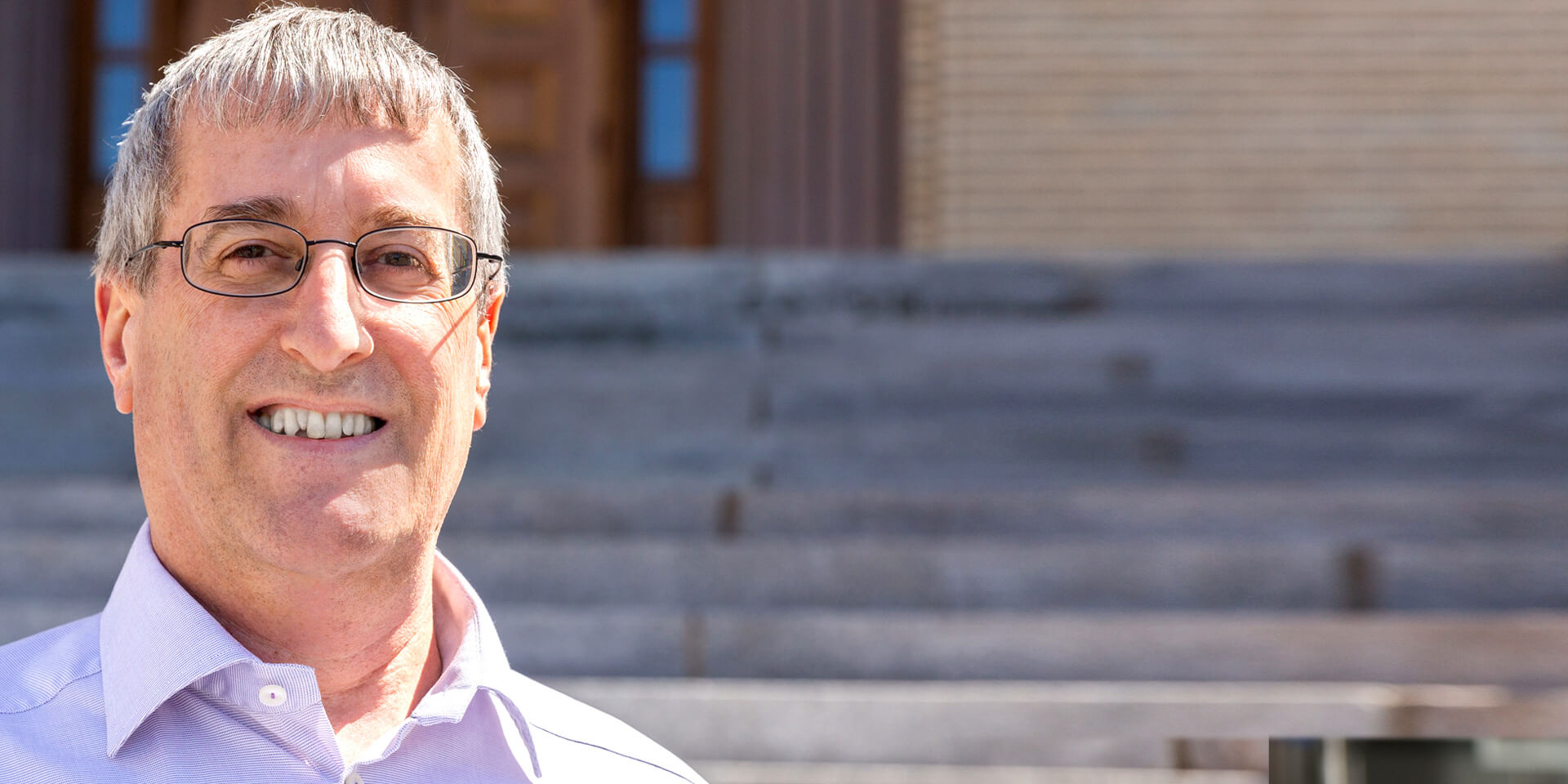Portrait of a researcher

The law of the infinitesimal
Yves Brun
FACULTY OF MEDECINE
Professor in the Department of Microbiology, Infectious Diseases and Immunology
Holder of the Canada 150 Research Chair in Bacterial Cellular Biology
His work has fuelled major advances in the fight against antibiotic resistance. And yet an advanced understanding of the basic mechanisms of how bacterial cells work is what drives Yves Brun. “It’s great if it leads to the development of new antibiotics. But the most important thing in basic research is doing basic research,” says Dr. Brun, who joined the Université de Montréal’s Department of Microbiology, Infectious Diseases and Immunology in 2019.
His novel observation method by microscope is testimony to this, having been adopted by scientists around the world, whether for studying basic growth mechanisms in microorganisms, understanding the mechanism of action of certain antibiotics, or developing new ones. But that’s not where it ends for the scientist, as evidenced by the recent breakthrough in the wake of his research on the synthesis of the bacterial cell wall and the adherence of biofilms. “We are showing a bacterial growth mechanism never seen before. Why is it so interesting? Because the better we can explain bacterial growth mechanisms, the better we can inhibit them at the right time, such as in cases of antibiotic resistance.”
A strong advocate of interdisciplinarity, Yves Brun also wants to get the public interested in the microbial world and antibiotic resistance. How? By leading a collaborative project with Les scientifines, the Water Rangers, and the Society for Arts and Technology. “We will tell the story of the poetic world of bacteria, by showing that a majority of them are beneficial for the organism.” It’s a bold effort to combine science and art, which he intends to unveil once pandemic health measures have been lifted. Until then, the coming months will be busy for the prominent professor and researcher, whose publications are highly regarded around the world.
Where are we in the fight against antibiotic resistance?
We are making discoveries all the time. Of course, we can find new antibiotics. But we will never be able to create a miracle drug.
Because as soon as we develop a new one, natural selection ensures that we automatically produce bacteria that offer it even more resistance, through multiplication and rapid evolution. Not to mention the overuse of antibiotics, which also creates the conditions for increased bacterial resistance. So yes, we are making advances, but so are bacteria…
What are you most enthusiastic about in your work on the formation of biofilm?
The tactile perception of bacteria. We now know that to attach to a surface, they secrete adhesive that thousands of bacteria adhere to, forming a colony, called biofilm. But we want to determine how and exactly when bacteria trigger this mechanism. By better understanding the first steps of this tactile process, of bioadhesive synthesis and secretion, we could design molecules to inhibit the formation of potentially pathogenic biofilms on surfaces.
What are the keys to optimizing interdisciplinarity?
You need to find partners who are fundamentally interested in the scientific question being posed. We often encounter people who are looking only for applications for their product. That can work, but generally only for a while. I think it’s important to have the patience to learn the other’s language, even if their field seems a long way from ours. Based on my experience, the real convergence of areas of focus and the adoption of a shared language lead to the most productive collaborations.